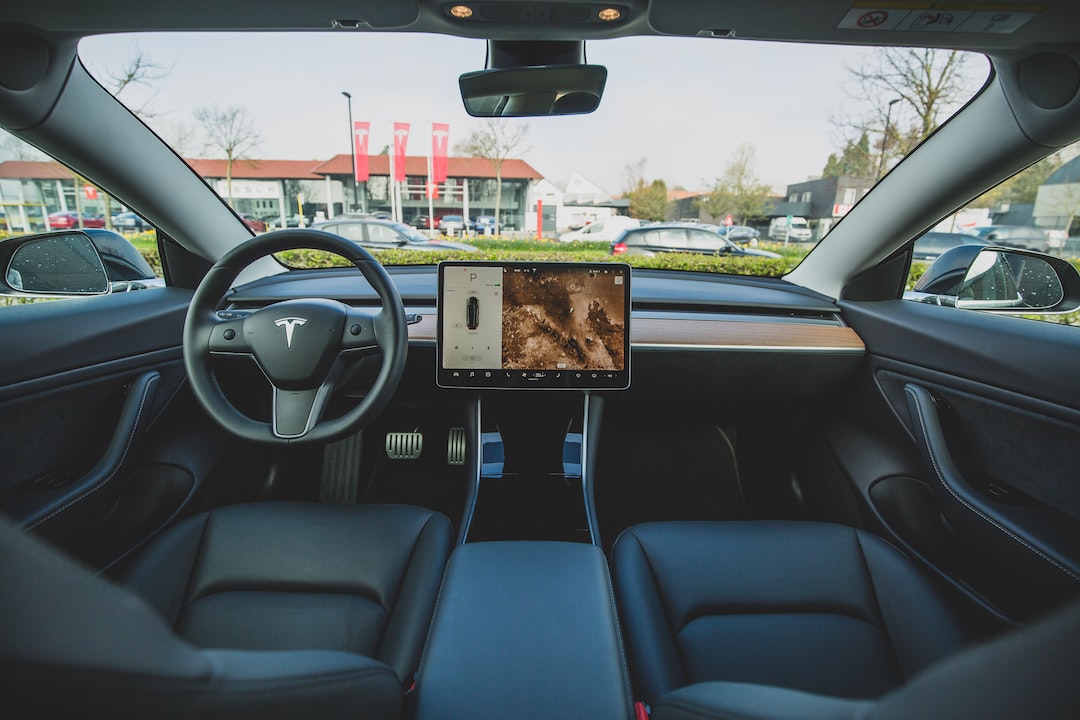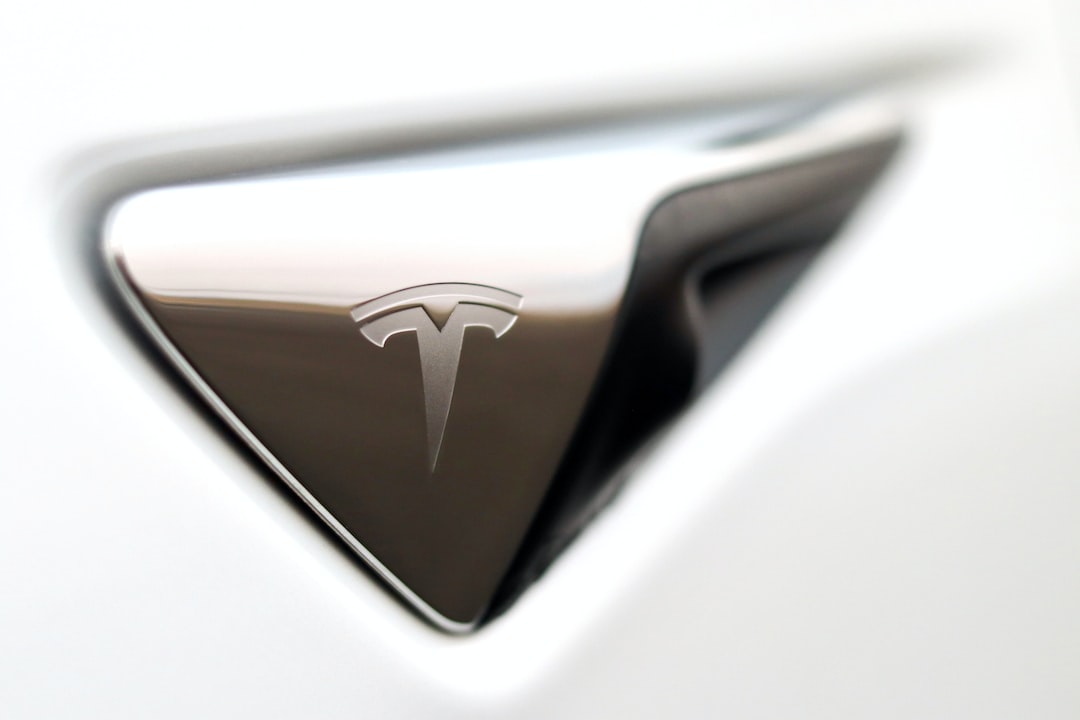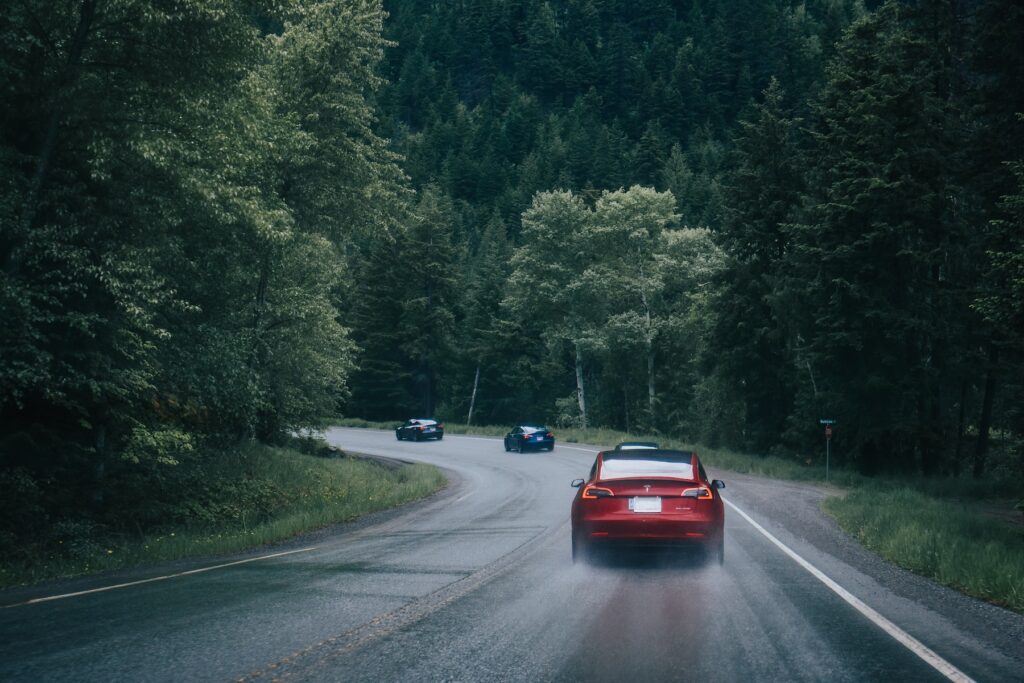
Photo by Bram Van Oost on Unsplash. Rechargd.com is reader supported. We may collect a share of sales or other compensation from the links on this page. As an Amazon Associate, we earn from qualifying purchases.
In the era of autonomous vehicles, cameras ensure safe and efficient driving. Among the various automakers, Tesla has emerged as a leader in implementing advanced camera technologies. But how many cameras are integrated into Tesla vehicles, and what are their purposes?
Teslas are equipped with eight cameras, part of their advanced autopilot system. Three cameras are mounted in the front, with one main forward camera and two side-facing cameras. The remaining five cameras surround the vehicle, ensuring a 360-degree view to aid navigation, lane monitoring, parking, and collision avoidance.
The Purpose of Tesla’s Cameras
Tesla’s camera system, collectively known as Tesla Autopilot, serves multiple purposes beyond self-driving capabilities. These sophisticated cameras work with radar systems, sensors, and complex algorithms to enable various safety and convenience features. Some of these features include:
- Autosteer
- Adaptive Cruise Control
- Auto Lane Change
- Autopark
- Sentry Mode – Must purchase a USB Thumb Drive To Be Active.
How Important is It to Understand the Number of Cameras?
Understanding how many cameras a Tesla has and their respective functions can help vehicle owners gain valuable insight into the advanced technologies embedded within these modern marvels. Additionally, it provides an opportunity to appreciate the intricate details and level of engineering that went into creating these state-of-the-art electric vehicles. So, let’s delve deeper into their complexities.
What is the Camera Breakdown by the Tesla Model?
Depending on the make and configuration of the Tesla model, the number of cameras within the vehicle may vary. In general, they can be broken down as follows:
Tesla Model S and Model X
These Tesla models have 8 cameras as part of their Autopilot hardware. The cameras are strategically placed around the vehicle and offer a 360-degree view to ensure complete coverage.
Tesla Model 3 and Model Y
Like the Model S and Model X, the Model 3 and Model Y also have 8 onboard cameras. However, the placement of these cameras has been updated to compensate for the vehicle’s more compact dimensions.
Where Are Tesla Cameras Located?
To provide comprehensive coverage and a holistic view of the vehicle’s surroundings, Tesla’s cameras are positioned at various locations around the car. Here’s a detailed breakdown of the camera placements:
Three Frontward-facing Cameras
Mounted behind the windshield, these cameras consist of a primary, a narrow, and a wide-angle camera. The primary camera has a 50° field of view and focuses on objects directly in front of the vehicle. The narrow camera has a 35° field of view and helps with long-range tasks, such as detecting highway obstacles. Lastly, the wide-angle camera offers a 100° field of view, which assists with navigating tight corners and city streets.
Two Side-mounted Cameras

Situated on each side of the vehicle, side-mounted cameras help detect vehicles in blind spots and facilitate lane changes. They also play a role in Autopark and summoning features.
Rearview Camera
This camera is located just above the rear license plate and is primarily used to provide a clear view of the area behind the car. It also supplements the side cameras in assisting the vehicle’s Autopark functionality.
B-Pillar Cameras
Specific to the Model 3 and Model Y, Tesla introduced an additional pair of cameras mounted on the B-pillars. These cameras aid in tracking objects close to the side of the vehicle and help ensure better coverage of blind spots.
While Tesla’s vehicles are equipped with many cameras, it’s important to note that the functionalities mentioned above won’t be available right out of the box. Certain features may require purchasing additional software packages, and some functionalities depend on regulatory approval in specific regions.
To leverage Tesla’s advanced camera system, owners must understand the importance of regular maintenance and proper care. Like any other vital vehicle component, these cameras need attention to deliver their full capabilities. In my experience, keeping the cameras clean and debris-free is essential for optimal performance.
Why the Number of Cameras Matters
The number of cameras in a Tesla is essential for both safety and autonomous driving capabilities. The more cameras installed, the better the car’s sensing and perception capacity. This advanced perception system allows the vehicle to recognize and respond to various driving situations, obstacles, and road conditions.
Moreover, the integrated cameras work together to interpret the vehicle’s surroundings, thereby improving the accuracy and efficiency of Tesla’s Autopilot features. These features enhance driver safety and provide peace of mind.
Future Enhancements and Additional Cameras
Tesla’s camera configurations have evolved over time, and the possibility of future enhancements remains open. As Tesla works to enhance its Full Self-Driving (FSD) capabilities and further incorporates external sensors into its vehicular design, the company might integrate additional cameras into its models.
Moreover, Tesla’s continuous software updates and improvements could eventually allow the current camera system to perform even more functions, such as detecting traffic lights, stop signs, pedestrians, and more.
Importance of Camera Redundancy
Tesla’s camera redundancy, made possible by the strategic placement of multiple cameras around the car, ensures that the loss of a single camera’s functionality doesn’t compromise the overall safety and efficiency of the vehicle. This redundancy, coupled with other sensor systems like radar and ultrasonic sensors, offers Tesla owners peace of mind.
As autonomous technology advances, camera redundancy will continue to play a crucial role in enhancing the safety and reliability of self-driving systems in Tesla vehicles.
The Future of Tesla Camera Systems and Their Advancements
As Tesla continues to push the boundaries of autonomous driving and in-car technology, the current number of cameras, their placement, and their functionalities may evolve even further. To stay ahead of the curve, Tesla could introduce even more cameras or use advanced camera sensors that boost the Autopilot system’s capabilities and accuracy.
Integration of Lidar Technology
While Tesla has remained focused on using camera-based systems and radar for its vehicles, the potential integration of Lidar technology, a light-based remote sensing system, could complement and enhance the existing camera suite. This combined approach, seen in various other autonomous driving projects, could further elevate Tesla’s vehicles’ perception capabilities, enabling even more precision in detecting and responding to objects and obstacles on the road.
Although Elon Musk has voiced his skepticism about Lidar in the past, Tesla’s future vehicle models could adopt technology that aligns with Lidar’s core principles if it significantly improves the vehicle’s sensing capabilities.
Expansion of Tesla Vision
Tesla continuously improves its camera system for more accurate and versatile object recognition. This progress includes expanding the so-called Tesla Vision capabilities to allow for the detection of a greater variety of objects and improved 3D positioning.
With ongoing advancements in artificial intelligence and deep learning, Tesla cameras could potentially become even more perceptive in the future, offering greater capabilities for autonomous driving and safety features.
Software Updates to Enhance Existing Camera Systems
One key aspect of Tesla’s vehicles that sets them apart from competitors is their over-the-air software updates. These updates refine the cars’ performance and efficiency and enhance the capabilities of the onboard camera system as well.
Future software updates could unlock more advanced features, better object detection, and improved decision-making capabilities related to the current camera system without adding more actual cameras to the car.

How Tesla’s Camera Count Compares with Competitors
As we look beyond Tesla and consider other automakers in the autonomous vehicle space, it’s interesting to note how their camera counts compare with Tesla.
Waymo
Waymo, Google’s autonomous driving project, has a relatively different approach to Tesla’s camera design. Waymo equips their self-driving vehicles with multiple cameras, Lidar, radar, and other sensors. While it is difficult to identify the exact number of cameras on a Waymo vehicle, their suite of combined sensors is aimed at providing a holistic view of the surroundings to support fully autonomous driving.
GM’s Cruise
General Motors’ Cruise division, another major player in the autonomous vehicle field, has outfitted its self-driving vehicles with a combination of sensors, including Lidar, radar, and multiple cameras for comprehensive situational awareness. The exact number of cameras on a Cruise vehicle is not public but remains an essential part of their environment perception system, similar to Tesla’s approach.
Final Thoughts
While it’s fascinating to examine the current number of cameras in various Tesla models, it’s essential to recognize that this number may continue to evolve as the automaker improves its camera technology, positioning, and integration with other sensors.
Today, Tesla vehicles are equipped with 8 cameras crucial in enabling advanced safety and self-driving features. As the technological landscape expands and Tesla continues to push the envelope in autonomous driving, it wouldn’t be surprising to witness further advancements in camera technology and an increasing presence of cameras across future Tesla models.
